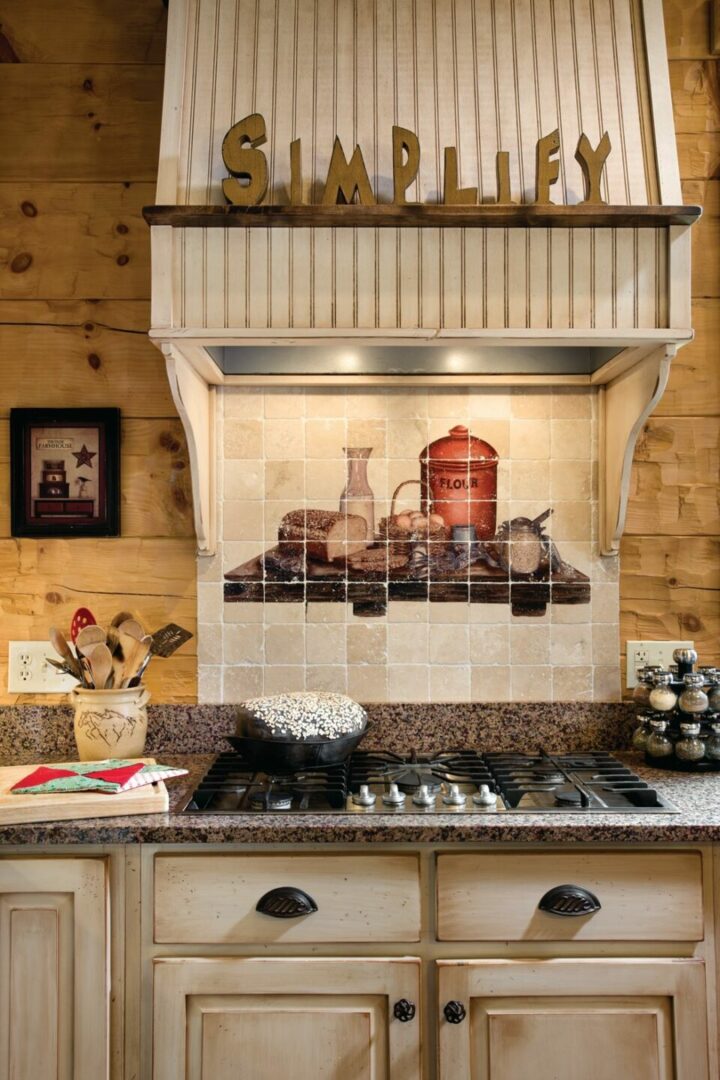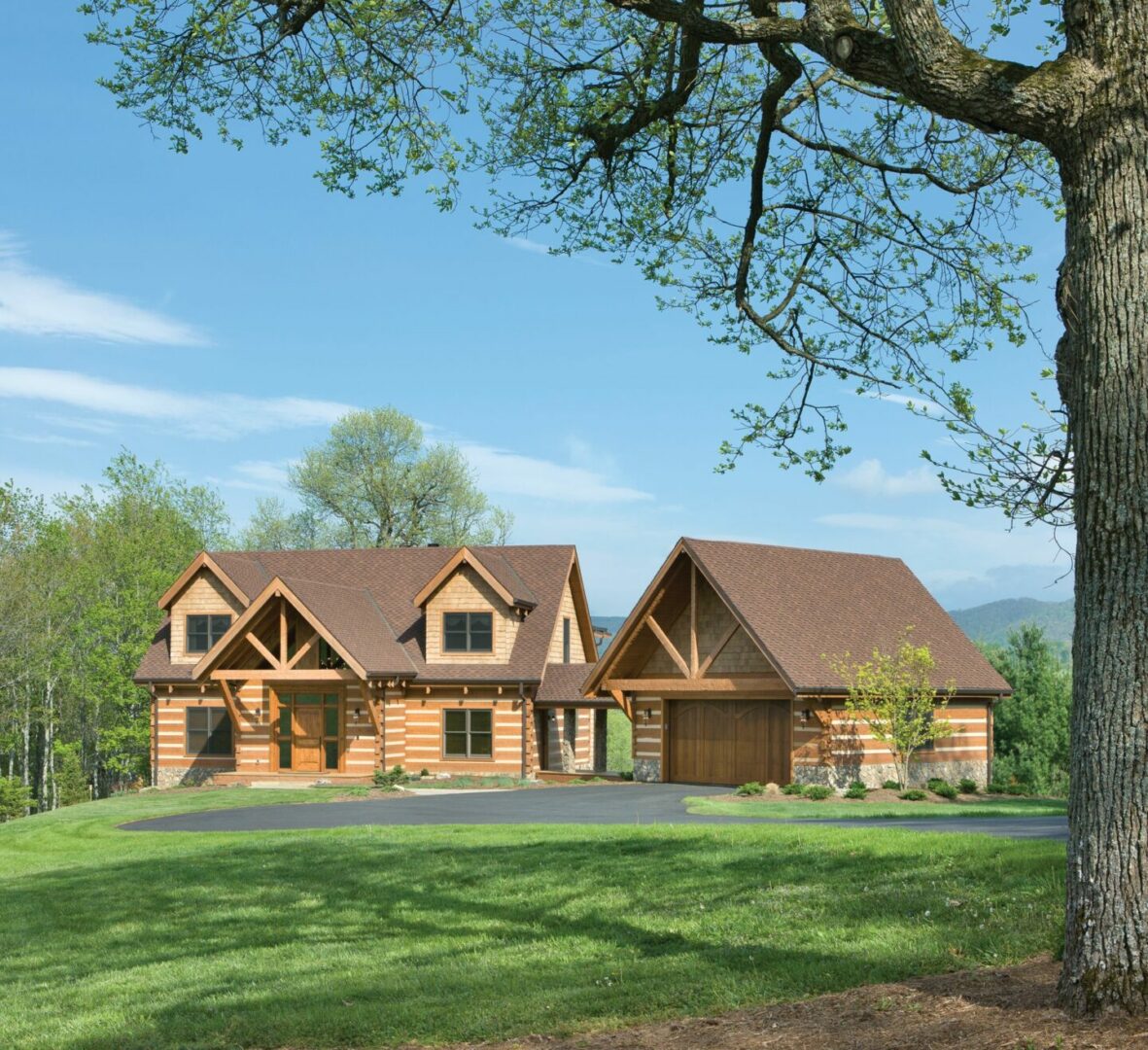Careful thought and planning are essential before building a log and timber home.
Look before leaping. Take stock of the situation and assess the needs and wants that are driving your urge to build a log and timber home.
It’s good advice. Comprehensively consider the project from every angle; asking questions, making lists, and completing some “field work” will lead to a positive experience, a project completed on time, and a home that has evolved from an idea into reality.
Mark Wrightman of True North Log Homes in Bracebridge, Ontario, advises an examination of purpose. “What is the intended use of the building?” he asks. “Is it a primary or secondary residence, a retirement home or investment?” Each of these worthwhile purposes will dictate the style, form and finish of a log and timber home project. “This is important, as we would design the home differently for all of these situations,” he says. “As an example, a retirement home will have limited stairs, wider door openings, larger bathrooms, etc. Secondary homes will have smaller closets, smaller bedrooms, and larger entertainment areas. Investment buildings will be designed around rental income, or a spec building will be what is most popular on the market.”
“Most clients think or dream about it a long time before they ever do anything,” says Mathew Sterchi of StoneMill Log and Timber Homes in Knoxville, Tennessee. “After collecting ideas and doing research, then look for land, finding a lot that fits all your needs, and then develop a plan.”

Conversations will typically follow centering on design and cost. Too many times, the pocketbook is unable to deliver the total package desired, so decisions involving design, materials, and finishes should take place early in the process to avoid disappointment, particularly if financing is involved.
“There are three primary determinants of how much a log home project will cost,” explains Brad Neu of Montana Log Homes in Kalispell, Montana. “These are land, the log package, and construction. A finished log home can range from $200 to well over $300 per square foot, excluding land. Building material costs, local labor rates, log home design, and your choice of finishes are some of the variables that will affect the cost of your home. We provide free estimates on log packages for our clients, and most contractors will provide free estimates for the finish cost of your home as well.”
A firm understanding of funding sources, such as bank financing or personal savings, will provide a smoother runway to completion. Knowing these parameters and sticking to them with a minimum of change orders will make a huge difference in finishing on time and within budget. Few things feel more uncomfortable than running out of funds due to mistakes or alterations that drive up costs and necessitate going back to the bank for more money.
“Make time for making decisions, and avoid changing your mind whenever possible,” advised Chris Wood of Hearthstone Homes in Newport, Tennessee. “Know your strengths and admit your weaknesses. Partner with people who are talented in the areas where you are not. Teamwork is important in any special custom project. It helps having a plan going in and being flexible enough to adjust when things occur that cannot be controlled. Keeping focused on the endgame, the finished, lived-in home, and the whole reason for building is essential.”
In other words, Wood advises future log homeowners to surround themselves with trusted partners, designers, providers of log and timber packages, contractors, and financial institutions that are reputable and dedicated to finishing the project with a satisfied client.

“Working with somebody who does not have a process opens the door for more risk of missing something,” observes Sterchi. “Each step in the process is important because you want a methodical completion of one step before moving on to the next one. You wouldn’t want to go to a lending institution before blueprints and an estimate are finalized. You can talk to the lender about getting prequalified, but they won’t be ready to close.”
A basic checklist is an indispensable tool for making the decisive moves toward building a log and timber home. Identifying the items that belong on that list will increase your confidence. Think about today’s purpose while also considering the near and distant future. If the plan is to live many years in the home, consider the construction project in that context. “Rushing the design process and building what they need now versus what they will need in the future is a mistake that must be avoided,” added Wrightman. “The repercussions to this are costly changes in construction or renovations in the future. We try our best to have the client think further into the future, things like grandkids and such. Or if funds don’t allow for the entire project all at once, we design a home in phase one and phase two to try to accommodate an addition at a later date.”
Failure to plan, as they say, is the equivalent of planning to fail. The 360-degree evaluation of the project itself—budget, land, design, packager, contractor, fit and finish—brings the building experience into perspective. Those who approach in a haphazard fashion will ultimately find themselves lurching forward at a disappointing pace, paying more out of pocket, and dealing with unnecessary delays and headaches. It’s best for prospective homeowners to thoroughly understand the scope of their undertaking and grasp both its simple and complex elements.
“Some clients and jobsites require the talent and cost of a registered architect, for example,” Wood remarks. “Others can find satisfaction with the resources of the log and timber company’s staff and resources. Delays in decisions impact scheduling and ultimately cost. Some decisions, such as cabinetry, colors, flooring thickness, finished basements, and others involve several trades and proper sequencing. Ask your builder for a calendar of deadline decisions so you can prioritize your time.”
Careful thought and planning are key steps to ensure the end result is the home of your dreams.

